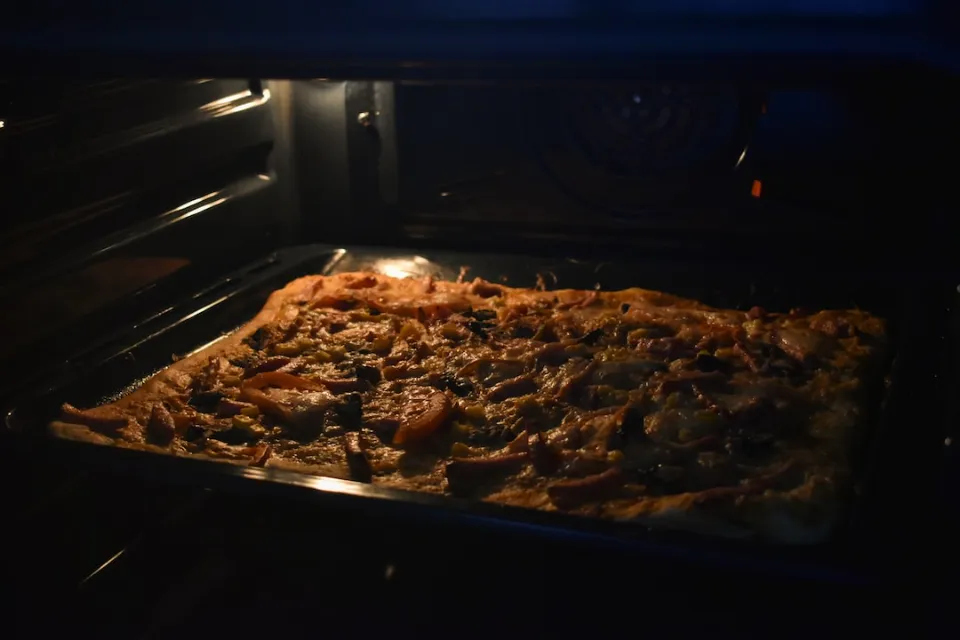In just a few minutes or less, microwaves can quickly reheat food. How does this wonderful invention operate, how do microwave ovens work?
Here, we explore the science behind one of the most revolutionary household appliances of the 20th century.
Microwaves Are a Form of Energy
Electromagnetic waves travel at the speed of light through space and are what are known as microwaves. Even though we are unable to see microwaves, they emit a bright glow that can be seen in the microwave cooking chamber.
Microwaves are shorter than radio waves but longer than infrared radiation. Louis Bloomfield, a physics professor at the University of Virginia, estimates that the cooking microwave measures about 12 centimeters from crest to crest. The majority of foods are easily able to absorb microwaves at this wavelength. However, unlike X-rays or ultraviolet rays, the photons—microwave particle—in a microwave don’t have enough energy to damage molecules and cause cancer.
In the electromagnetic spectrum, microwaves come after radio waves and before infrared light. The diameter of a baseball divided by 12 centimeters is the approximate size of the microwaves used for cooking.

The Microwave Oven
Within the microwave oven, a part known as the magnetron produces microwaves from electricity. A transformer changes the 120 volts of typical household electricity from a wall socket to 4,000 volts or more to power the magnetron. The voltage heats a filament at the center of the magnetron, boiling off electrons.
Two ring magnets above and below the anode bend the electrons back toward the filament, causing them to move in a circular motion instead of in a straight line toward the anode, or positive terminal, which surrounds the filament.
The anode’s cavities or openings, which the electrons rush through to produce microwaves.
“It’s like blowing across the top of a glass bottle,” says Bob Schiffmann, president of the International Microwave Power Institute. But at a specific frequency, usually 2.45 gigahertz, oscillating waves are produced instead of a whistle. Through the use of an antenna, the microwaves are sent into the cooking area where they bounce off the food before eventually penetrating it.
The microwave door has a metal mesh that acts as a mirror to reflect the microwaves and prevent them from escaping. Microwaves cannot escape through the mesh holes, but visible light can, so we can see what is cooking inside.
The majority of microwaves have a glass turntable that rotates the food like a carousel while heating it. Your meal would become stuck in the microwave’s hot and cold spots if the food wasn’t rotated.

How Microwaves Cook Food
When you hit the start button “it usually takes about 2 seconds to heat up a filament inside the magnetron tube,” says The food compartment is then blasted with microwaves, says Schiffmann.
Water, fat, and sugar are readily absorbed by the microwave frequency that is typically used, 2.45 gigahertz. Says Bloomfield: “The waves are at the right frequency to penetrate deep into food and they deliver cooking power primarily to the food’s water content. Solids devoid of water hardly ever absorb microwaves.” Because of this, food in microwave-safe containers (such as Aluminum Foil)doesn’t heat up to the same degree as food outside of them.
Water molecules are bent back and forth in a microwave to heat food, such as a cup of coffee or a slice of lasagna. The ends of water molecules are each positively and negatively charged. According to Bloomfield, one water molecule resembles the head of Mickey Mouse. Consider Mickey’s face to be the negatively charged oxygen atom, and Mickey’s ears to be the two smaller positively charged hydrogen atoms.
The negatively charged end of the water molecule points away from the electric field of the microwave, while the positively charged end tries to align itself with it. Mickey’s ears and face, however, are being rapidly twisted back and forth because the field reverses 2.5 billion times per second.
The molecules rub against one another as they oscillate. Friction from this results in the production of heat.
Due to simultaneous heating of the food’s interior and exterior, a microwave cooks food much more quickly than a conventional oven, according to Schiffmann. The surface of the food is heated first in a conventional oven or frying pan, and then the heat gradually moves inside. Foods don’t become crispy or browned like they would with other types of cooking because the air inside the microwave oven is room temperature.
Learn more about how microwave oven cook food on Home Services Offers